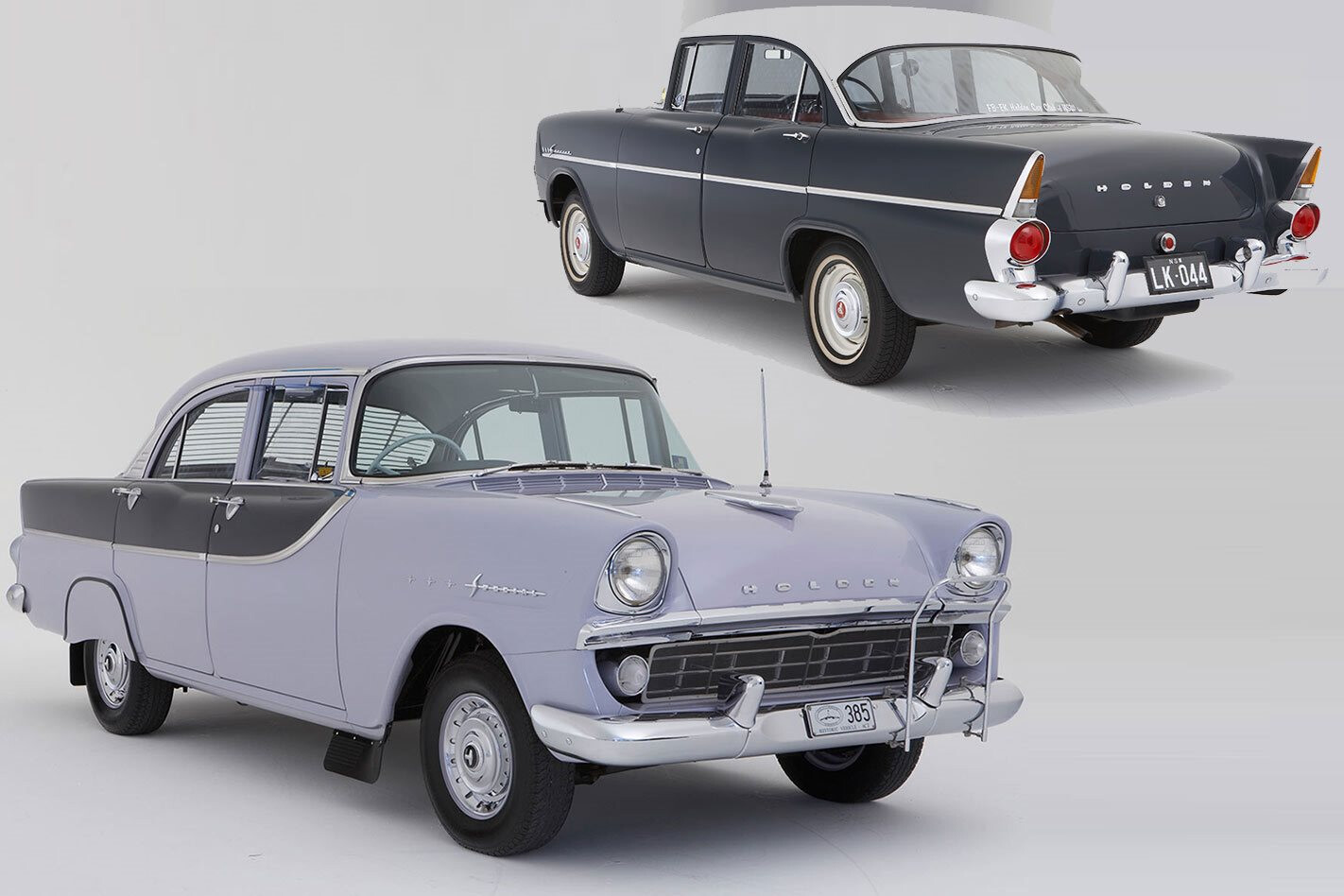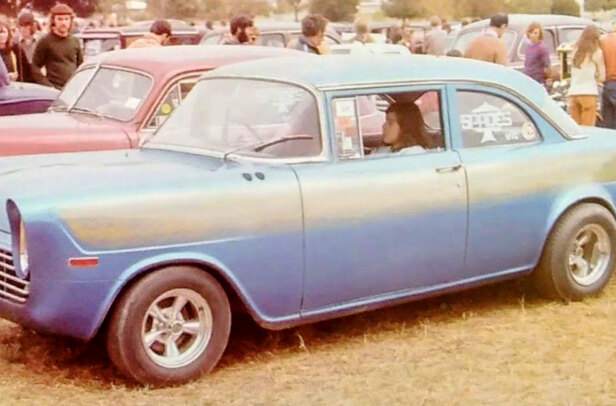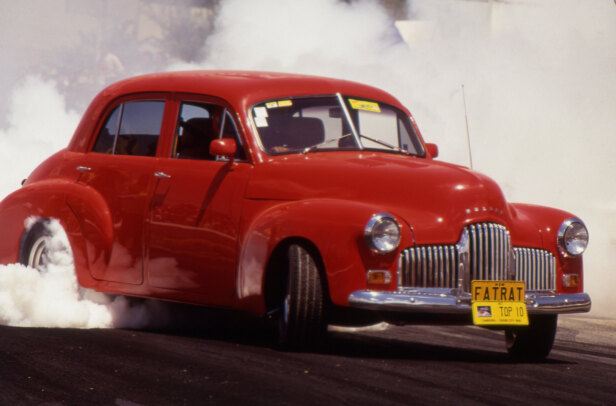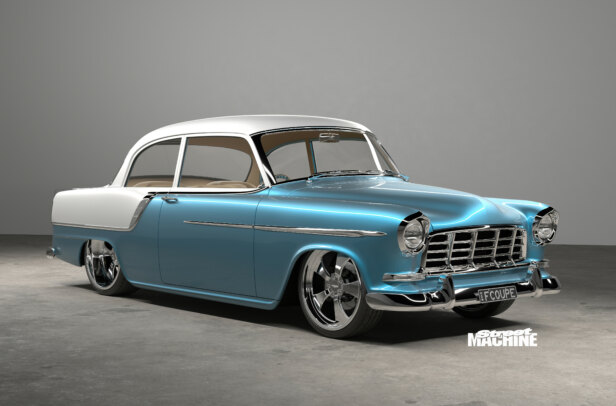This article was originally published inthe June 2007 issue of Street Machine
AS THE 1960s rolled around, Holden found itself facing some proper competition for the first time, with Ford’s Falcon and Chrysler’s Valiant zooming into view. The answer was the FB model, released in January 1960. The FB had a swag of 1957 Chev DNA in its styling, with some serious fins and a wraparound windscreen for the first time. While the bodywork was generally all new, boot lids and tailgates were carried over from the FC, while the ute and van models used FC rear styling, including the tail-lights. Although the wheelbase remained the same, the length of the body increased by six inches.
Mechanically, the FB was very similar to its predecessor, though the engine capacity was increased from 132 to 138ci (2.26 litres), thanks to a 1/16th-inch overbore. Four-wheel drum brakes remained but were increased in size. The suspension layout also stayed the same but the rear springs were widened. Midway through the model run, acrylic Dulon paint replaced the old nitro-cellulose duco.
The trim options were reduced: the Business sedan was dropped and Standard or Special became the only choices for sedans and wagons.
The FB was the first Holden to be produce in left-hand drive for export, opening up markets in Asia, Africa, the Middle East and even Hawaii. Holdens were also assembled locally in South Africa and Indonesia around this time.
Holden FB in detail:
1. Besides the side flash, you can separate a Special from a Standard by the vertical grille bars as well as the chromed headlight and tail-light surrounds — these are painted body colour on the Standard.
2. The faithful grey motor was bored out 1/16th to give a capacity of 138ci. Compression was also increased to 7.25:1 but extra weight — an FB Special weighed in at 2490lb or 1.1 tonnes, 115lb (52kg) more than an FE Special — offset any power gains.
3. Instead of the traditional-style needle, the speedo used an orange-coloured indicator band. An improved fresh air induction system was also introduced but the optional radio was located above the glovebox, far away from the driver!
4. Boot lids and tailgate panels were carried over from the FC.
SCOTT DUNKLEY, 1960 FB SPECIAL
Resplendent in its Iris and Dartford Grey duco, Scott’s FB is a trophy winner for show and go alike, and has numerous strong performances in Summernats driving events to its credit.
The car is adorned with almost every accessory available for this model, including the ‘beauty kit’ of guard spears, bonnet bird and hubcap centre.
“This is the only Holden to be sold without a lion on the hubcaps,” says Scott.
Other goodies include the NASCO water bag, taxi rail, rear Venetian, heater, radio, door scratch-plates, Diamond Dot radio and spats.
“I got a hard time at Summernats for running around with the water bag but we got our own back when these guys boiled their car in the Supercruise and we ended up lending them some water!”
HOLDEN EK
The FB was replaced in May 1961 by the EK, which ran for just one year. Styling changes were subtle; the big news was the introduction of the imported three-speed Hydramatic automatic transmission. Big news — but the net effect was to produce the slowest Holden yet built. One very welcome upgrade was the replacement of the archaic vacuum windscreen wipers with electric units.
Holden made 174,747 FBs and 150,214 EKs, with a market share of 49.6 per cent in 1961, despite the release of the XK Falcon in 1960. The Falcon was initially a great hit, trumping the FB with more modern styling and the option of automatic transmission. Luckily for Holden, a number of problems with the XK soon emerged, the most serious of which was that the suspension was too delicate for Australian conditions.
The Australian-assembled R Series Valiant, released in 1962, was more suited to Aussie roads, had radical styling and easily outperformed both the Holden and the Ford with its 3.7-litre slant six engine. However, only 1008 units were made and while these were quickly snapped up, the numbers were too small to impact on Holden’s market dominance.
Holden EK in detail:
1. Styling changes from the FB were subtle, especially on Standard models. The EK’s red plastic grille badge is a giveaway, as are the over-riders: on an FB they sit on top of the bumper, while on an EK they extend to the bottom. The grille design is also different, with the EK’s indicator/parkers spaced more widely apart and built into the upper grille bar .
2. Besides the new automatic trans (not shown!) the EK benefited from the introduction of electric wipers and the reintroduction of the bonnet lock cable — FB bonnets could be unlocked externally.
3. An easy way to pick an EK Special over an FB Special is the replacement of the FB’s side flash with a single mould that extends the whole length of the car on the EK. Standard FB and EKs have smaller moulds that run along the front guards only.
4. Holdens were produced in left-hand drive from the FB onwards and were sold extensively throughout Asia, Africa and the Middle East.
LORRAINE KIRKMAN, 1961 SPECIAL
Lorraine’s Holden EK — otherwise known as Daphne — is an unrestored, unmolested gem. Her husband has his own modified EK ’62 with a 186 stroked out to 235ci, five-speed ’box, Pro Stitch trim, Dragways and slammed suspension. Nice, but Lorraine wanted one of her own and this is what she got.
The original owner traded it in back in 1977 and it sat in storage until 2000, when the Kirkmans snaffled it up. The car had done just 44,000 miles at this point!
“We did up the brakes, changed the plugs, the points and the oil and that is about it,” says Lorraine. The car is your basic Special, with the only options being the radio and a steering lock. While working on the car, they found some of the production line chalk marks were still visible!





Comments